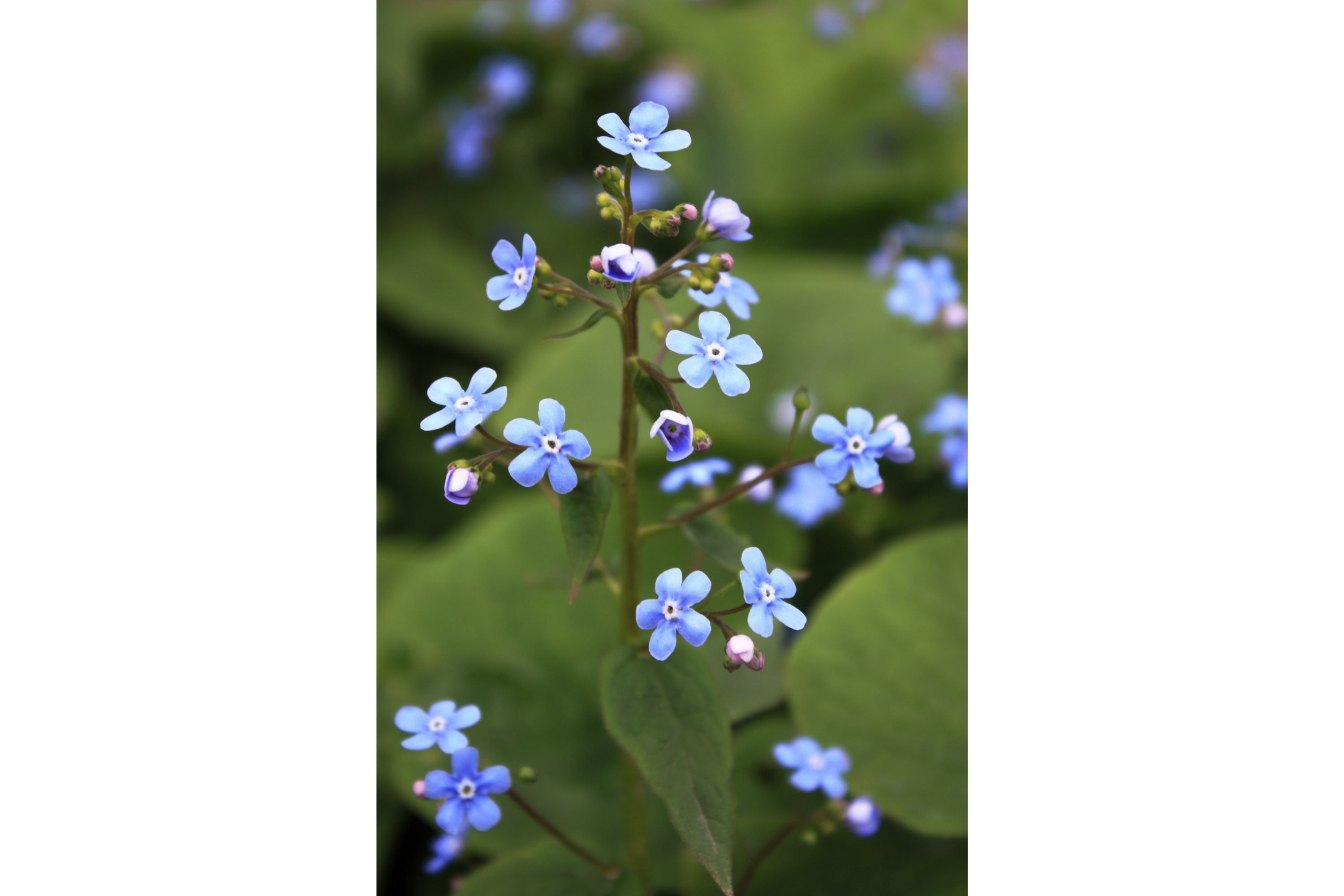Forget-me-not
(Myosotis alpestris)

Description
Myosotis alpestris, commonly known as the alpine forget-me-not, is a small herbaceous plant that belongs to the family Boraginaceae. It is a popular ornamental plant that is native to the mountainous regions of Europe, including the Alps, Pyrenees, and Carpathians. This article provides a detailed overview of Myosotis alpestris, including its morphology, ecology, uses, and cultivation. Morphology Myosotis alpestris is a small, clump-forming perennial herb that typically grows to a height of 10-30 cm. It has a slender stem that is hairy and branching near the base. The leaves are alternate, simple, and oval-shaped, measuring 1-3 cm long and 0.5-1.5 cm wide. They are covered in soft hairs and have a bright green color. The flowers are arranged in terminal clusters, forming a dense inflorescence. They are typically blue, but can also be white, pink, or purple, and have a five-lobed corolla with a yellow center. The fruit is a small nutlet that contains four seeds. Ecology Myosotis alpestris is a cold-tolerant plant that is adapted to alpine and subalpine habitats. It is typically found growing in rocky, well-drained soils at elevations between 1500 and 3000 meters. It prefers moist, cool conditions and can tolerate partial shade. In its natural habitat, it often grows alongside other alpine plants, such as primroses, saxifrages, and gentians. Uses Myosotis alpestris is primarily used as an ornamental plant in gardens and landscapes. It is a popular choice for rock gardens, alpine gardens, and border plantings, as well as in containers and hanging baskets. Its bright blue flowers and compact growth habit make it an attractive addition to any garden. In addition to its ornamental value, Myosotis alpestris has some medicinal properties. It has been used traditionally as a treatment for coughs, bronchitis, and other respiratory ailments. It is also said to have diuretic and laxative properties. Cultivation Myosotis alpestris is a relatively easy plant to grow and care for. It prefers cool, moist conditions and well-drained soil. It can be grown in full sun or partial shade, although it will flower more profusely in full sun. It is important to keep the soil consistently moist, but not waterlogged, as the plant can be susceptible to root rot. Myosotis alpestris is propagated by seeds, which can be sown directly in the garden in spring or fall. The plant may also self-seed in favorable conditions. It is a short-lived perennial, typically living for two to three years, although it may reseed itself to persist longer. To maintain its compact growth habit, it can be pruned back after flowering. In conclusion, Myosotis alpestris is a delightful plant that is well-suited to alpine and rock gardens, as well as border plantings and containers. Its beautiful blue flowers and easy-care nature make it a popular choice among gardeners. It is also a valuable addition to any medicinal herb garden, with its traditional use in treating respiratory ailments. With proper care, Myosotis alpestris will provide years of enjoyment and beauty in any garden.
Taxonomic tree:







